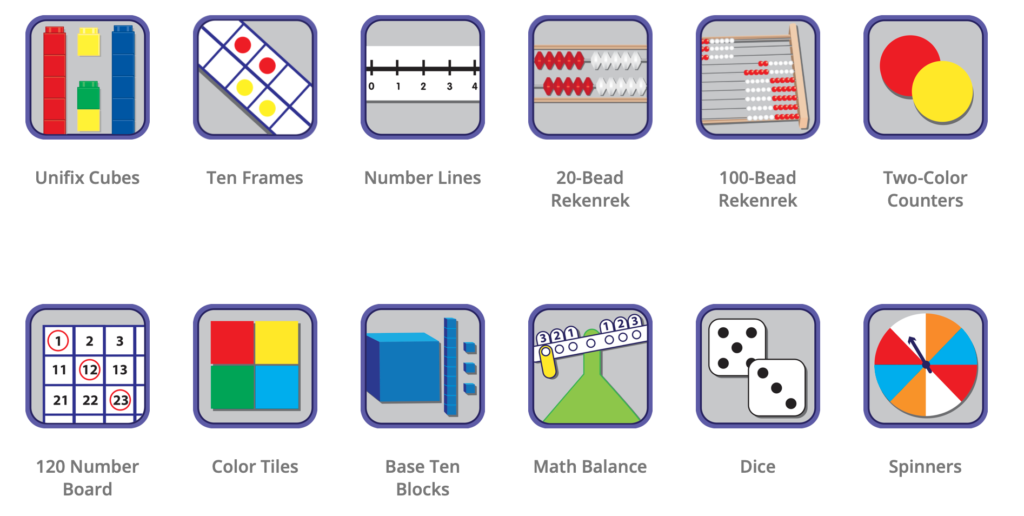In the realm of digital education tools, Didax Virtual Manipulatives emerge as a dynamic resource for educators seeking to enhance the teaching and learning of mathematics. These virtual manipulatives offer an interactive and engaging way for students to explore mathematical concepts. In this blog post, we will delve into the features and advantages of Didax Virtual Manipulatives, providing educators with insights on how to integrate this tool effectively into their math instruction.

Understanding Didax Virtual Manipulatives: Didax Virtual Manipulatives are a digital adaptation of the traditional hands-on learning aids used in mathematics education. These manipulatives are interactive, allowing students to virtually manipulate objects on a screen to better understand abstract mathematical ideas.
Key Features:
- Diverse Manipulative Library: Didax Virtual Manipulatives provide a rich collection of digital learning aids covering various mathematical topics. From base-ten blocks to fraction tiles, the tool caters to educators across different grade levels, offering a versatile set of resources to support diverse learning objectives.
- User-Friendly Interface: The user interface of Didax Virtual Manipulatives is designed with simplicity and ease of use in mind. Intuitive controls make it accessible for both educators and students, ensuring a seamless transition from traditional manipulatives to their digital counterparts.
- Visual and Interactive Learning: The tool enhances the learning experience by providing a visual and interactive representation of mathematical concepts. Students can drag, drop, and manipulate virtual objects, making abstract ideas more tangible and fostering a deeper understanding of the subject matter.
- Accessibility Anytime, Anywhere: Didax Virtual Manipulatives can be accessed online, offering the flexibility to engage with mathematical concepts at any time and from any location. This adaptability is particularly valuable in today’s educational landscape, where remote and blended learning are prevalent.
Integration into Teaching Practices:
- Concept Reinforcement: Utilize Didax Virtual Manipulatives to reinforce and illustrate abstract mathematical concepts. Whether teaching multiplication, division, or geometry, the tool provides a visual aid that can enhance students’ comprehension and retention.
- Interactive Lesson Plans: Infuse interactivity into your lesson plans by incorporating Didax Virtual Manipulatives. Create activities that encourage students to actively manipulate virtual objects to solve problems, promoting a hands-on and engaging learning experience.
- Individual and Group Exploration: Capitalize on the versatility of Didax Virtual Manipulatives by incorporating both individual and group activities. Students can work independently or collaboratively, fostering a sense of teamwork and encouraging peer-to-peer learning.
Conclusion: Didax Virtual Manipulatives offer a bridge between traditional hands-on learning tools and the digital age, providing educators with a powerful resource to enhance their math instruction. By leveraging the diverse manipulative library, user-friendly interface, and interactive learning features, educators can create a dynamic and effective learning environment where students can actively explore and understand the fascinating world of mathematics. Step into the future of math education with Didax Virtual Manipulatives, where learning becomes a visually immersive and interactive journey for all.


